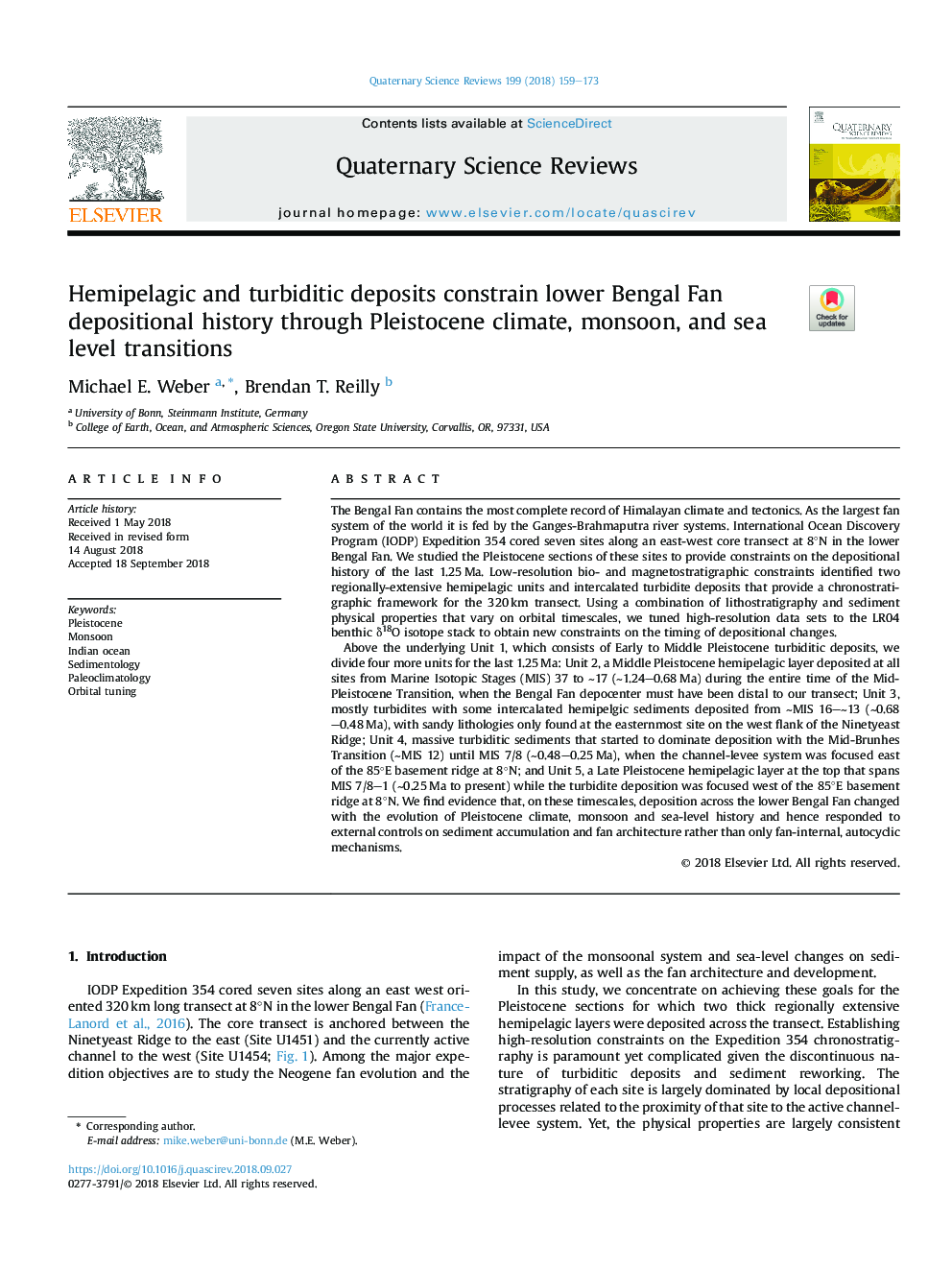| Article ID | Journal | Published Year | Pages | File Type |
|---|---|---|---|---|
| 11024630 | Quaternary Science Reviews | 2018 | 15 Pages |
Abstract
Above the underlying Unit 1, which consists of Early to Middle Pleistocene turbiditic deposits, we divide four more units for the last 1.25â¯Ma: Unit 2, a Middle Pleistocene hemipelagic layer deposited at all sites from Marine Isotopic Stages (MIS) 37 to â¼17 (â¼1.24-0.68â¯Ma) during the entire time of the Mid-Pleistocene Transition, when the Bengal Fan depocenter must have been distal to our transect; Unit 3, mostly turbidites with some intercalated hemipelgic sediments deposited from â¼MIS 16-â¼13 (â¼0.68-0.48â¯Ma), with sandy lithologies only found at the easternmost site on the west flank of the Ninetyeast Ridge; Unit 4, massive turbiditic sediments that started to dominate deposition with the Mid-Brunhes Transition (â¼MIS 12) until MIS 7/8 (â¼0.48-0.25â¯Ma), when the channel-levee system was focused east of the 85°E basement ridge at 8°N; and Unit 5, a Late Pleistocene hemipelagic layer at the top that spans MIS 7/8-1 (â¼0.25â¯Ma to present) while the turbidite deposition was focused west of the 85°E basement ridge at 8°N. We find evidence that, on these timescales, deposition across the lower Bengal Fan changed with the evolution of Pleistocene climate, monsoon and sea-level history and hence responded to external controls on sediment accumulation and fan architecture rather than only fan-internal, autocyclic mechanisms.
Related Topics
Physical Sciences and Engineering
Earth and Planetary Sciences
Geology
Authors
Michael E. Weber, Brendan T. Reilly,
